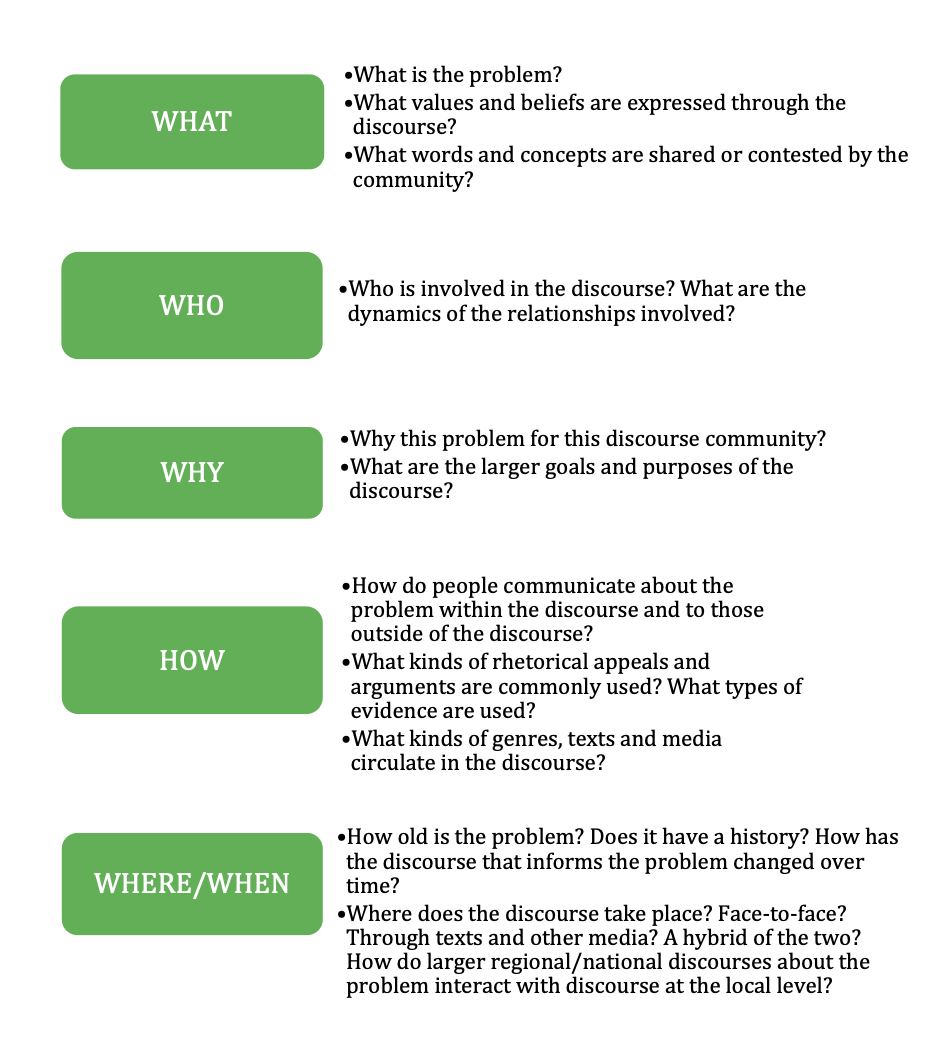15 Discourse and Discourse Community
Christian J. Pulver
The term discourse community combines two key concepts—community and discourse.
Generally speaking, community refers to the local groups we live and work with, our neighborhoods, schools, and workplaces. While living in proximity with other people is an important aspect of community, other aspects beyond location play an important role. Those aspects have to do with our shared ways of using language and the common values and beliefs that emerge from how we communicate with each other. Such shared language practices are called discourse, and people who share similar ways of talking and thinking, and do it frequently together, are part of a discourse community.
Conventionally, we can think of discourse as the exchange of words and ideas among those who share a common purpose for continually interacting. We discourse about the weather, last night’s game, politics, and art. Discourse is like conversation, but conversation is just one way that discourse is exchanged within the larger language and communication patterns that we engage in, from our local discourse communities to the larger public. Discourse is also shared through written texts, videos, podcasts, and other discursive genres. So, not only does our proximity to each other shape the communities we are a part of, discourse communities also share particular genres, styles, and accepted ways of communicating with each other, and they tend to gravitate around particular problems that are of shared concern.
Though the word community is often thought of as people who get along well, not all discourse communities get along, and members don’t always like each other. That is to say, discourse communities come in all shapes in sizes, and the language practices that occur within them can vary widely as a result. Some discourse communities can be confrontational or argumentative (legal discourse, for example), and others might be more intimate and caring (parent-child discourse, for example). And discourse communities don’t exist in a bubble—they are embedded in the larger public and cultural discourses that include entertainment, national politics, and public debates that circulate broadly via mass and social media. The discourse communities we are part of at work or in college, with family and friends, are always embedded in these larger discourses.
Understanding the shape of a discourse and the problems that matter to a discourse community are vital to understanding the nature of the particular problem you are considering and how to solve it. To achieve this kind of understanding, it is always useful to map out the basic contours of the discourse by looking at the where, when, what, who, how, and, why of that discourse.
Mapping the Discourse of a Problem or Controversy

Mapping a discourse in these ways is an ongoing activity that will help you develop a richer, broader understanding of the problem you are exploring. Not only will it help you understand the nature and nuances of the problem, it will help you understand how to enter the conversation and contribute towards its solution (what is known as discourse competence).
Media Attributions
- DiscourseCommunityTable © Christian Pulver is licensed under a CC BY-NC-SA (Attribution NonCommercial ShareAlike) license

